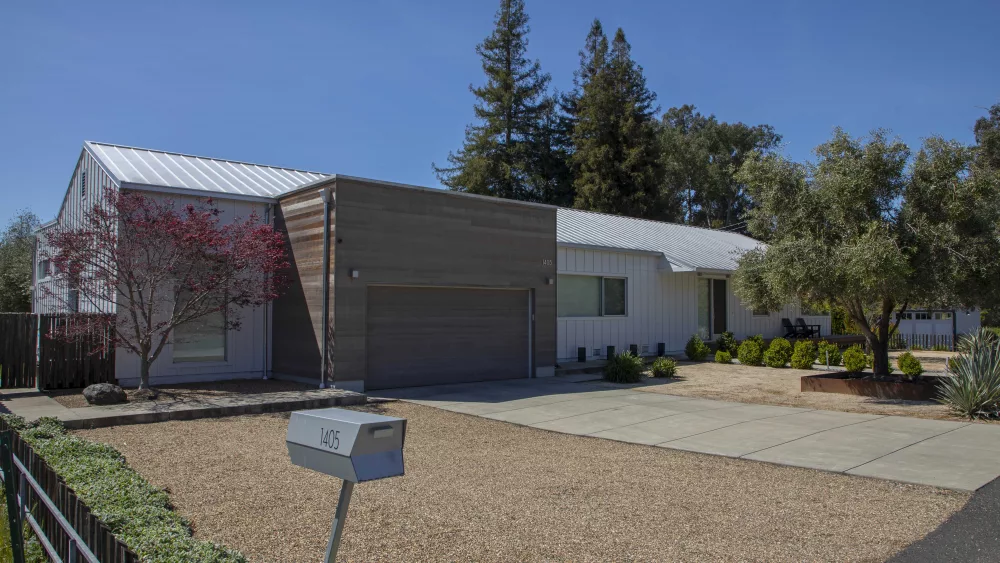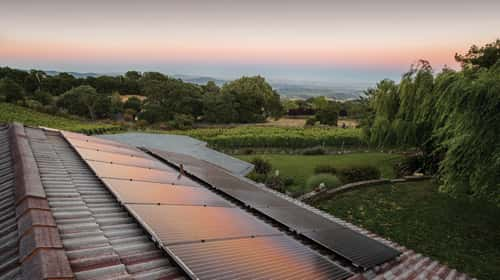 The solar industry had a $154 billion impact on the U.S. economy in 2016, according to data released in March 2017 by The Solar Foundation. The Solar Energy Industries Association reported the average installation costs have dropped by more than 70 percent since 2010, providing the opportunity for the industry to expand into new markets and set-up thousands of solar systems throughout the nation. American companies now employ more than 260,000 solar workers, double the number it employed in 2010. California had the highest total number of solar jobs in 2016, and the number of solar employees increased in 44 of the 50 states.
The solar industry had a $154 billion impact on the U.S. economy in 2016, according to data released in March 2017 by The Solar Foundation. The Solar Energy Industries Association reported the average installation costs have dropped by more than 70 percent since 2010, providing the opportunity for the industry to expand into new markets and set-up thousands of solar systems throughout the nation. American companies now employ more than 260,000 solar workers, double the number it employed in 2010. California had the highest total number of solar jobs in 2016, and the number of solar employees increased in 44 of the 50 states.
Solar industry growth and stability is partially attributed to the federal solar Investment Tax Credit (ITC). ITC was originally established by the Energy Policy Act of 2005 and was set to expire at the end of 2007. A number of extensions moved the expiration date back to the end of 2016. Many experts believed that adding an extension would help bring the solar industry to maturity, and Congress listened, passing a spending bill in December 2015 that extended the tax credit to homeowners in some form through 2021.
North Bay solar pioneer
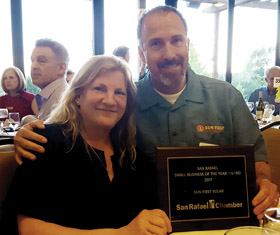 Established in 1984, Sun First Solar was one of Marin County’s first solar companies. Today they’re still one of the most trusted solar contractors in Marin County, as well as the North Bay. “We have been a leading advocate for solar and renewable energy in Marin County for the last 34 years,” says CEO Kim Fink. Based in San Rafael, the company has installed thousands of commercial and residential solar electric and thermal systems in the Bay Area. Aran Moore, who owns and operates Sun First Solar, grew up in Marin and was passionate about bringing the alternative energy source to the community. “Aran is a true pioneer in the Solar Clean Energy Field. Values matter to Aran, so he created a company with a mission to prevent the depletion of natural resources and protect the beauty of our environment through the use of renewable energy,” says Fink.
Established in 1984, Sun First Solar was one of Marin County’s first solar companies. Today they’re still one of the most trusted solar contractors in Marin County, as well as the North Bay. “We have been a leading advocate for solar and renewable energy in Marin County for the last 34 years,” says CEO Kim Fink. Based in San Rafael, the company has installed thousands of commercial and residential solar electric and thermal systems in the Bay Area. Aran Moore, who owns and operates Sun First Solar, grew up in Marin and was passionate about bringing the alternative energy source to the community. “Aran is a true pioneer in the Solar Clean Energy Field. Values matter to Aran, so he created a company with a mission to prevent the depletion of natural resources and protect the beauty of our environment through the use of renewable energy,” says Fink.
Sun First Solar has installed enough solar power that the carbon offsets are equal to the planting of more than 1 million trees. Moore started out when the technology to generate solar energy consisted of humongous panels, and Sun First Solar has seen a lot of change in the realm of solar technology over the years that has improved the products efficiency and reliability and brought the price down tremendously. Since solar technology is known to last for 30 plus years, most growth is generated from new referrals. However, Sun First Solar has been around long enough that they are just now beginning to see repeat customers who can now double there power from the same foot print, therefore, allowing for extra electrical loads for Eco Car Charging Stations.
Sun First Solar services all of the Bay Area – the North Bay, Sonoma, Napa, Marin, San Francisco, the East Bay and the South Bay. “We love working on both residential and commercial projects and we will go where we are needed,” says Fink. They have contributed to the Bay Area community through various renewable energy projects such as residential, commercial, solar carport structures, off-grid systems and battery back up systems.
“One thing we do differently from a lot of solar contractors, is we strive to complete the job from design, to install, and to interconnection with the least interruption to the client, which makes for a great install experience. We try and complete the entire process within 30 days. Unless, of course, it’s new construction,” says Fink. Sun First Solar strives to provide the highest customer satisfaction by providing the most efficient, customized energy systems in the Bay Area. “We believe in a consultative approach and are dedicated to improving the environment and our community. Our team delivers the finest customer service and have the technical experience to install solar on every type of roof (tile, metal, steep etc.) and custom build solar solutions. We are a SunPower Elite Commercial and Elite Residential dealer, which gives us the ability to provide a 25-year warranty on the highest-efficiency solar panels on the market.” Sun First does not use subcontractors. All of the work from beginning to end is handled in-house. Sun First was recently honored with the San Rafael Small Business of the Year Award as well as the Marin IJ’s Readers Choice Winner for Best Solar and Best General Contractor.
The science
 Over the years, scientists have made numerous advances in optimizing how to effectively utilize the sun to produce energy. In this industry, a typical solar panel works by allowing particles of light, known as photons, to knock electrons free from atoms thus generating a current of electricity. Solar panels contain many smaller units called photovoltaic cells. These photovoltaic cells essentially convert the light into electric current, and this is the process that allows solar panels to produce clean electricity for homes and businesses.
Over the years, scientists have made numerous advances in optimizing how to effectively utilize the sun to produce energy. In this industry, a typical solar panel works by allowing particles of light, known as photons, to knock electrons free from atoms thus generating a current of electricity. Solar panels contain many smaller units called photovoltaic cells. These photovoltaic cells essentially convert the light into electric current, and this is the process that allows solar panels to produce clean electricity for homes and businesses.
Fink says, “Over time, the efficiency of solar panels has improved tremendously. When solar panels were first introduced, the efficiency was just about 6 percent and today some systems can be as much as 30 percent efficient. Most recently, scientists have tested solar panels that have achieved as much as 46 percent efficiency. Other improvements in the industry have to do with the appearance of the solar panels; from bulky panels to thin panels, and from heavy panels to lighter panels. The introduction of the Alternating Current Photovoltaic (ACPV) module, which includes a factory-integrated micro inverter, provides a revolutionary combination of high efficiency, high reliability, and module-level DC-to-AC power conversion.” The AC module has allowed homeowners with difficult design challenges and or shade issues to install solar. She notes that the new AC modules enable rapid installation, best-in-class system aesthetics and intuitive visibility into system performance, with the best-combined power and product warranty in the industry.
Simply Solar California
 Though Simply Solar is only going into their fourth year of operation, the founding ownership team has many years of combined experience amongst them. Sam Prom, responsible managing officer, was an installer for more than 10 years and was known for the quality of his workmanship, having built a reputable brand around his service. Two of the other three owners had previously worked for another solar company that fell short of what they wanted to see in a company. The men were inspired to create their own business model focusing on best practices for customer service and installation. This vision led to Sean Green, CTO; Jake Hassid, director of operations; Ben Goldberg, sales development director; and Prom forming the nucleus and executive management team of Simply Solar California.
Though Simply Solar is only going into their fourth year of operation, the founding ownership team has many years of combined experience amongst them. Sam Prom, responsible managing officer, was an installer for more than 10 years and was known for the quality of his workmanship, having built a reputable brand around his service. Two of the other three owners had previously worked for another solar company that fell short of what they wanted to see in a company. The men were inspired to create their own business model focusing on best practices for customer service and installation. This vision led to Sean Green, CTO; Jake Hassid, director of operations; Ben Goldberg, sales development director; and Prom forming the nucleus and executive management team of Simply Solar California.
Simply Solar California’s service area consists largely of a radius extending 100 miles around Petaluma where their headquarters is located, and encompasses the entire Bay Area, Sacramento and beyond. “Our goal is to provide world class service and have an efficient operations process that leverages our in-house software and enables a customized install process,” says Green. The four owners wanted to continue with what Prom had done in the field by providing an excellent product and installation experience, and to improve the individualized installs by advancing the operational processes and efficiencies utilizing their custom software, and robust customer service.
The basic science is the same across the board for solar: when sunlight hits silicon, it produces energy. So what makes a difference in performance? One of the main differences between solar panel brands is in the manufacturing of the panels. “We strive to use affordable, industry leading panels that every homeowner can rely on. Our priority is on high efficiency panels, made in the USA whenever possible. Our lineup includes Silfab and LG,” says Green. One of the advances in the manufacturing technology is that some companies are now able to automate the factory process so that the silicon in the panel is consistently pristine and routinely tested along the way. “The technology surrounding the manufacturing process of a supplier sets them apart – the technology they use impacts the quality of their products,” says Green.
 Simply Solar California does custom installs in any configuration. “The real value added is that we do exactly what a customer wants. Our lean operations process allows us to pace the focus on the customer and their exact needs. Any roof type, any configuration, we will make it work. It all relates to how we treat our customers.” Green notes that positive Yelp reviews prove that Sun Solar California’s customers are getting what they want. “We strive to have world class customer service which is why our clients are informed of each step in the solar process. We are an education-based company and do not use high-pressure sales tactics. Instead we educate the client and allow our products and service to speak for itself,” says Green. Residential solar installations are the majority of their business, but they also specialize in smaller commercial scale projects.
Simply Solar California does custom installs in any configuration. “The real value added is that we do exactly what a customer wants. Our lean operations process allows us to pace the focus on the customer and their exact needs. Any roof type, any configuration, we will make it work. It all relates to how we treat our customers.” Green notes that positive Yelp reviews prove that Sun Solar California’s customers are getting what they want. “We strive to have world class customer service which is why our clients are informed of each step in the solar process. We are an education-based company and do not use high-pressure sales tactics. Instead we educate the client and allow our products and service to speak for itself,” says Green. Residential solar installations are the majority of their business, but they also specialize in smaller commercial scale projects.
In the past, the two main models were financing or leasing, but these days, customers are encouraged to buy their solar system outright. The issue is that a customer pays more for financing or leasing and doesn’t get to take advantage of the tax incentives. This is the reason why Sun First California is a purchase first company, though in some instances a lease might be a good idea, for instance in the case of a nonprofit organization.
Saving customers money
 Net Energy Metering (NEM), is a special billing arrangement that provides credit to customers with solar systems for the full retail value of the electricity their system generates. Under NEM, the customer’s electric meter keeps track of how much electricity the customer consumes, and how much excess electricity is generated by the solar system and sent back into the electric utility grid. Over a 12-month period, the customer has to pay only for the net amount of electricity used from the utility over-and-above the amount of electricity generated by their solar system.
Net Energy Metering (NEM), is a special billing arrangement that provides credit to customers with solar systems for the full retail value of the electricity their system generates. Under NEM, the customer’s electric meter keeps track of how much electricity the customer consumes, and how much excess electricity is generated by the solar system and sent back into the electric utility grid. Over a 12-month period, the customer has to pay only for the net amount of electricity used from the utility over-and-above the amount of electricity generated by their solar system.
Solar energy is a completely carbon free, zero emissions product. Its cost savings comes from a perfect storm, the price of panels have come down, and there are still tax subsidies. “Because it saves money, using solar is a no brainer. In the past a lot of people would have liked to use solar, but the systems were cost-prohibitive. Now that the pricing has come down, more people are seeking out information about solar,” says Green.
Batteries for off the grid backup
Most people these days in the North Bay who have a solar system installed, don’t use a battery back up system, they still rely on PG&E as their back up. Part of the reason for this is that the batteries have not been available at a cost-effective price point. Just like with solar panels, however, there is a movement within the industry to produce more affordable batteries. Sun First California currently uses a few different battery backup systems, Sonnen Batterie, LG Chem and the Tesla Powerwall, for customers who are interested in home energy storage.
“Battery storage is beneficial when the grid goes down, but at today’s cost, whether or not someone purchases a battery depends on how much they are willing to spend and how important it is to them to back up their power without using a public utility company,” says Green. “Batteries are at the point where solar systems were several years ago, before they became more economical,” says Green.
Green Stock Solar
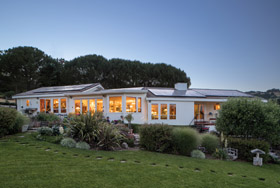 Green Stock Solar is a sole proprietorship, owned and founded by David Peterson since 2011. Prior to starting his company, Peterson worked as an installer for a larger corporation and was unimpressed with the sales tactics that were being used. Instead of aggressive sales pitches, Green Stock Solar provides information to potential buyers and guides them through the process of going solar. The company has been growing since its inception and has stellar Yelp reviews. “Our objective is the complete satisfaction of our clients,” says Peterson. With 50 percent of their business coming from client referrals, their list of new clients proves that their customers are happy with their work.
Green Stock Solar is a sole proprietorship, owned and founded by David Peterson since 2011. Prior to starting his company, Peterson worked as an installer for a larger corporation and was unimpressed with the sales tactics that were being used. Instead of aggressive sales pitches, Green Stock Solar provides information to potential buyers and guides them through the process of going solar. The company has been growing since its inception and has stellar Yelp reviews. “Our objective is the complete satisfaction of our clients,” says Peterson. With 50 percent of their business coming from client referrals, their list of new clients proves that their customers are happy with their work.
“We have a foothold in the market because we are not just trying to make money nor just trying to maximize our profits. We are a smaller company and for us our goal is to provide the best service. Since many of our clients are local, we can’t just install a system and say goodbye. We see our customers in the streets and in our community; they are our neighbors,” says Peterson. As a smaller company with low overhead, we are flexible to meet the demands of the changing environment.” Peterson points out that these qualities help to set Green Stock Solar apart from others.
The company’s core area of focus is Napa County and its surrounding areas, including Solano County and parts of Sonoma County, as well as the East Bay. Green Stock Solar also has customers from Sacramento to San Jose. The company works on homes and smaller commercial buildings, and have installed solar for some of the smaller wineries in the Napa area. Green Stock Solar also provides panel-cleaning service, but other than that, a well-installed solar system requires very little maintenance.
Green Stock Solar doesn’t offer leasing or power purchasing agreements. “We are a purchase¬¬-only company and we don’t have any salesmen trying to sign up customers. We communicate with our potential clients and give them information, informing them that they have a big decision to make and letting them know we are around if they have any questions,” says Peterson. Their low-pressure approach creates a lasting relationship, with some customers coming back to them for an install a year after first receiving their materials and upon researching other companies.
Green Stock Solar only uses in-house installers trained directly by Peterson. They budget plenty of time for an installation to ensure that they will get the job done correctly. The installation team gets excited about new challenges that other companies sometimes won’t tackle such as putting solar on a domed roof or a pergola. They recently installed a system on a yurt-shaped roof that was turned down by a larger company that advertises on television. “These kind of out of the norm installs excite us because they are new experiences,” says Peterson.
The future of solar power
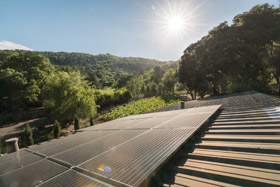 Cost savings have driven the industry. “Without a doubt, switching to solar is a guaranteed savings when compared to traditional sources of power,” says Fink. “Our customers see savings of up to 80 percent when they change their energy suppliers and go solar with us. Whether you buy a system and pay it back with energy savings or you pay a low, fixed-rate for your energy, you’ll reach the point where your solar panels have paid for themselves.” The Return On Investment has now come down to five to seven years, much less than the 15-20 years not very long ago. “After reaching the break-even point, it’s real savings for your bottom line, and with the utility rates growing each year you’ll save more with solar than the ever before,” says Fink.
Cost savings have driven the industry. “Without a doubt, switching to solar is a guaranteed savings when compared to traditional sources of power,” says Fink. “Our customers see savings of up to 80 percent when they change their energy suppliers and go solar with us. Whether you buy a system and pay it back with energy savings or you pay a low, fixed-rate for your energy, you’ll reach the point where your solar panels have paid for themselves.” The Return On Investment has now come down to five to seven years, much less than the 15-20 years not very long ago. “After reaching the break-even point, it’s real savings for your bottom line, and with the utility rates growing each year you’ll save more with solar than the ever before,” says Fink.




